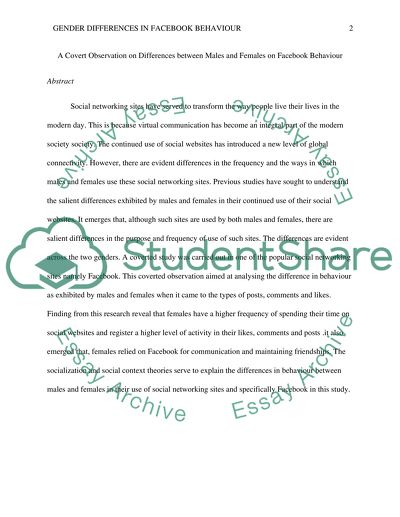Cite this document
(“Differences between Males and Females on Facebook Behaviour Research Paper”, n.d.)
Differences between Males and Females on Facebook Behaviour Research Paper. Retrieved from https://studentshare.org/psychology/1645976-differences-between-males-and-females-on-facebook-behaviour
Differences between Males and Females on Facebook Behaviour Research Paper. Retrieved from https://studentshare.org/psychology/1645976-differences-between-males-and-females-on-facebook-behaviour
(Differences Between Males and Females on Facebook Behaviour Research Paper)
Differences Between Males and Females on Facebook Behaviour Research Paper. https://studentshare.org/psychology/1645976-differences-between-males-and-females-on-facebook-behaviour.
Differences Between Males and Females on Facebook Behaviour Research Paper. https://studentshare.org/psychology/1645976-differences-between-males-and-females-on-facebook-behaviour.
“Differences Between Males and Females on Facebook Behaviour Research Paper”, n.d. https://studentshare.org/psychology/1645976-differences-between-males-and-females-on-facebook-behaviour.


